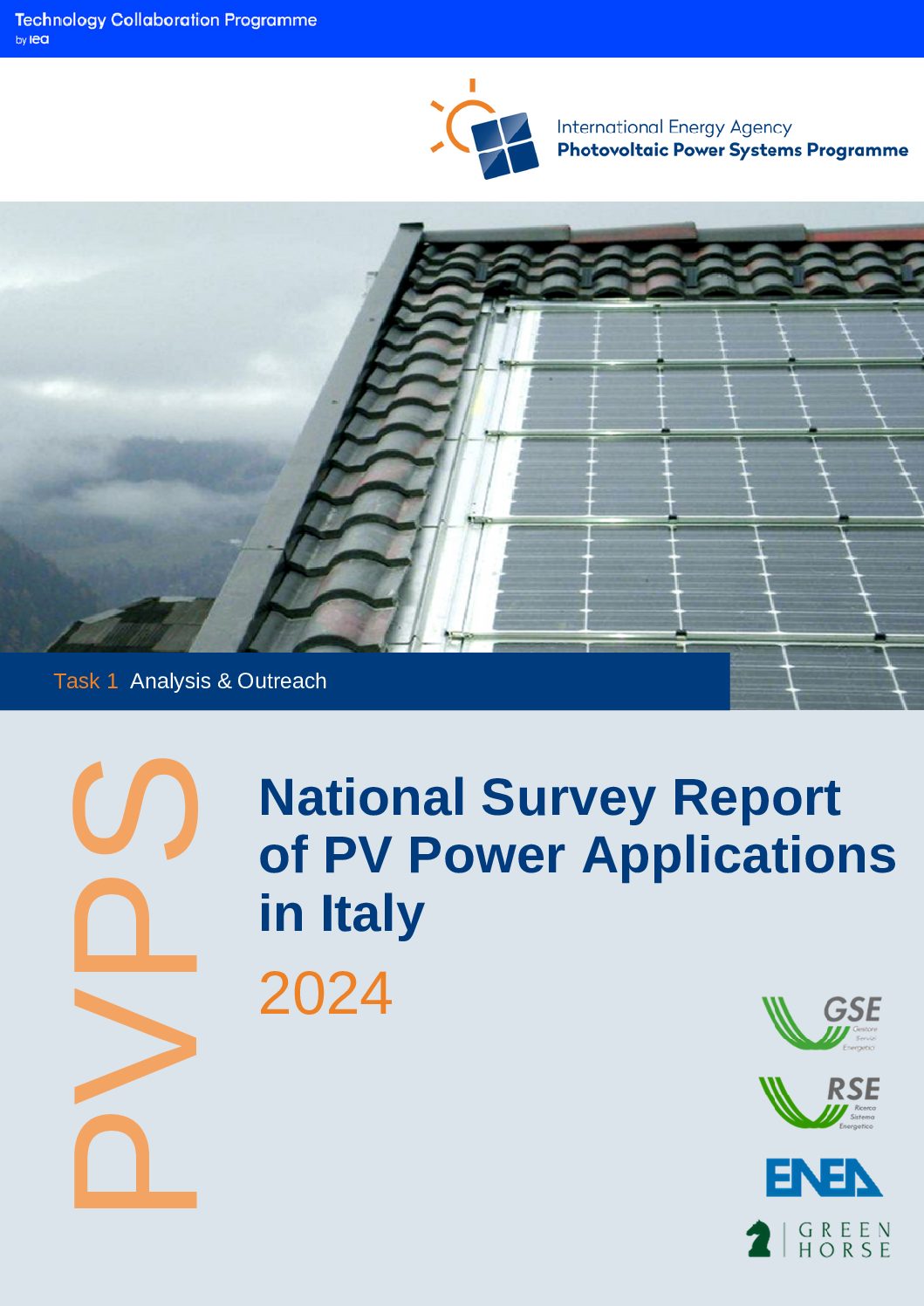October 2025
In 2024, Italy achieved its strongest year of solar growth in over a decade, installing 6.7 GW of new photovoltaic (PV) capacity and bringing cumulative capacity to 37 GW. PV generation reached 36 TWh, covering about 11.5 % of national electricity consumption. Growth was led by large-scale ground-mounted plants, complemented by strong uptake in the residential sector.
Key highlights from the report:
Market Development: A total of 278,423 plants were commissioned in 2024, raising the national total to 1.88 million installations. Small systems under 10 kW accounted for 85 % of installations and 21 % of total capacity, while plants above 1 MW represented 54 % of new power. The average installed size for new systems reached 23.8 kW. Most PV systems (98 %) are connected to the low-voltage grid, with 55 % located in northern Italy.
Competitiveness and Costs: Average module prices declined to 0.28 €/W. Turnkey system costs ranged between 1.2 and 1.6 €/W for residential projects and 0.66–0.9 €/W for utility-scale plants. The average value of the national PV business reached €6.7 billion in 2024.
Policy Framework: Italy’s updated Integrated National Energy and Climate Plan (INECP) targets 80 GW of PV by 2030 and 131 GW of renewables overall. Key policy instruments include the FER 1 and FER 2 decrees, offering FiT and FiP mechanisms for various RES technologies, and the FER X Decree (effective 2025) for market-competitive RES. The CACER Decree introduced incentives for energy communities and self-consumption, while new rules promote agri-PV and floating PV through tenders and capital grants.
Industrial and Technological Trends: Domestic PV manufacturing rebounded, led by Enel’s 3SUN gigafactory in Catania (1.2 GW in 2024, expanding to 3 GW in 2025) and FuturaSun’s FENICE project in Veneto (2 GW planned). Other firms such as DAX Solar and Midsummer Italia advanced production of high-efficiency and flexible thin-film modules, signalling renewed momentum in Italy’s PV supply chain.
Economic Impact: The PV sector supported approximately 9,600 full-time jobs in 2024, mainly in installation, manufacturing, and O&M activities.
Outlook: Italy’s PV expansion aligns with EU Green Deal targets and national decarbonisation goals. Continued regulatory streamlining, expanded community energy models, and industrial investments are expected to sustain rapid growth toward 80 GW by 2030. However, heritage-site permitting and regional implementation remain key challenges to accelerating deployment across all market segments.
